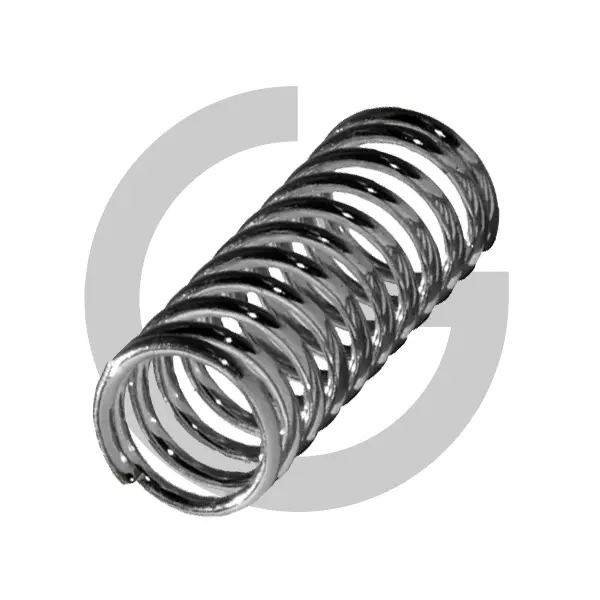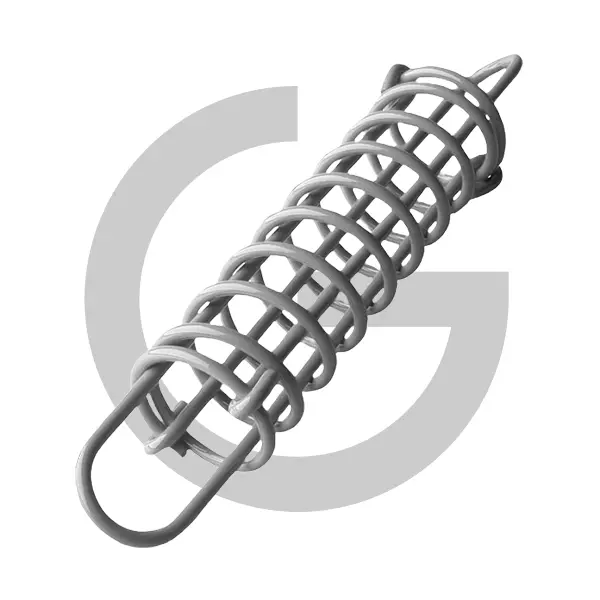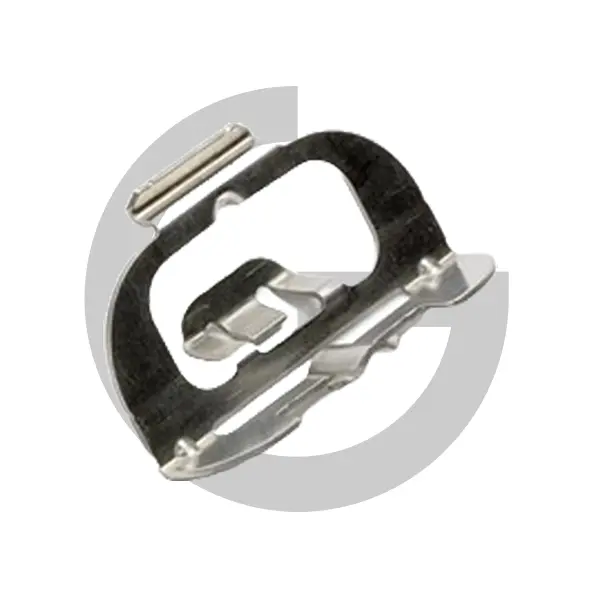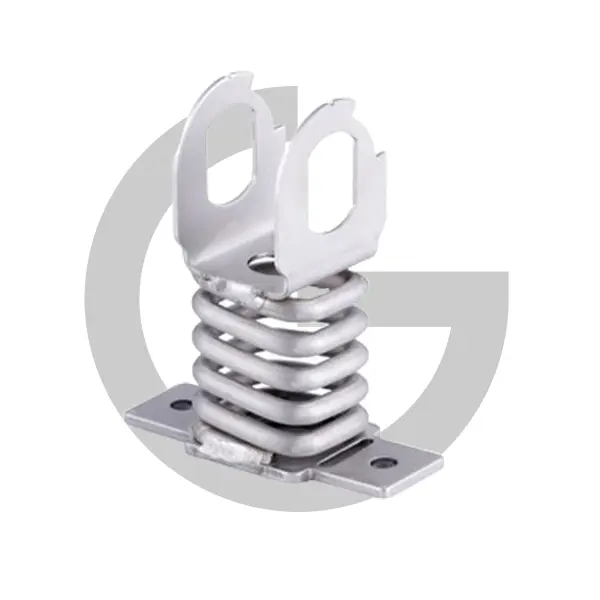Structure and function
Clock springs are flat spiral springs designed to store and release rotational energy. The strip of steel is coiled in layers, allowing the spring to wind and unwind in a controlled movement. This construction enables precise torque within a compact design. Unlike other spring types, the clock spring can rotate continuously around its axis, ensuring uniform force transfer and smooth motion.
In industrial use, this reliability is crucial. Machines and assemblies that depend on consistent rotational motion benefit from the clock spring’s ability to operate repeatedly without fatigue or loss of accuracy. Each spring is produced with specific tolerances to secure stable operation and a long service life.
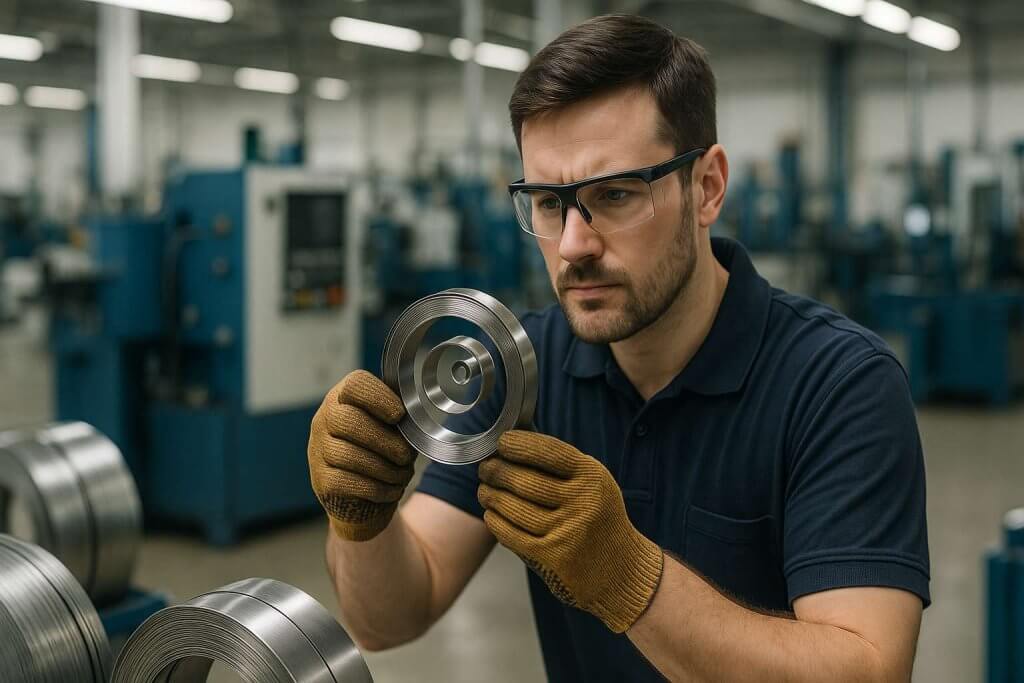
Advantages compared to torsion springs
In many mechanical systems, a torsion spring may be sufficient. However, when a higher degree of rotation or compact energy storage is required, a clock spring is the more effective choice. Because it winds flat rather than twisting wire, it distributes mechanical stress evenly and reduces wear.
The geometry also allows a smaller installation space relative to the torque produced. This feature is often decisive in precision assemblies such as actuators, instruments, or compact drive systems. In these settings, a clock spring ensures controlled movement while maintaining balance and repeatability across many cycles.
Applications in industrial systems
The use of clock springs extends far beyond their original role in timekeeping devices. In modern industry, they are integrated into mechanical and electromechanical systems that require reliable torque in limited space.
In manufacturing equipment, clock springs provide constant tension or counterforce for rotary mechanisms. They help maintain positioning accuracy in tools, handles, or spindles that must return smoothly to a neutral position after activation.
In the automotive industry, clock springs are applied in steering systems, airbag modules, and control interfaces. Their ability to transfer electrical signals through rotation makes them suitable for systems that combine motion and connectivity.
Electrical assemblies and instruments use clock springs to manage cable retraction or maintain steady resistance in sensors and control units. Across these functions, the component supports efficient mechanical design while minimising maintenance needs.
Materials and precision manufacturing
Every clock spring manufactured at Hagens is produced from high-quality materials selected for strength and fatigue resistance. The steel strip must withstand repeated winding and unwinding without deformation. For demanding environments, stainless steel or specialised alloys may be chosen to enhance corrosion resistance or maintain performance under temperature variations.
Each production batch is documented and tested to meet internal and customer-specific standards. Dimensional accuracy, surface condition, and torque delivery are verified through continuous quality control. This ensures consistency across both standard and custom-made designs. Hagens’ production follows the same certified procedures as other spring types, based on ISO 9001, ISO 14001, and IATF 16949 standards.
Customised configurations
Industrial systems often require unique mechanical behaviour or integration with other components. Hagens therefore offers clock springs in both standard dimensions and fully customised configurations. Each design is engineered to match the intended torque range, rotational angle, and installation requirements. At Hagens all springs are custom springs, build to meet the customers specific needs.
When developing a custom spring, factors such as material grade, surface treatment, and expected load cycles are defined together with the customer. This collaboration ensures that every spring performs reliably within its operating environment, whether it is installed in a compact electrical unit or a heavy-duty industrial mechanism.
The company’s engineering teams work across production sites in Denmark, Sweden, Hungary, and China to provide consistent manufacturing quality and documentation for global customers. This setup allows flexibility in production scale while maintaining the same technical standards across all facilities.
Quality and testing
Clock springs must operate with minimal deviation over long service periods. For this reason, each spring undergoes extensive testing to confirm torque accuracy, durability, and dimensional precision. Performance is verified through repeated load cycles to ensure that the spring retains its mechanical properties even after extended use.
Surface inspection and finishing are equally important. Depending on the intended environment, protective coatings or treatments may be applied to prevent corrosion or wear. The final verification includes torque measurement and controlled winding tests to ensure stable energy release. Through this process, Hagens guarantees the reliability required for safety-critical and precision applications.
Integration in industrial design
Clock springs are frequently incorporated into assemblies where compact power transmission is needed. Designers often choose them to reduce component size or simplify mechanisms that would otherwise require more complex gear or motor systems.
In automated equipment, the spring can act as a return or balancing element, enabling efficient energy recovery and smoother operation. Its ability to provide constant torque across multiple rotations allows engineers to create mechanical systems with minimal backlash and precise control.
In electrical and mechatronic assemblies, clock springs contribute to compact cable-management systems, ensuring consistent tension during movement. This function is essential in rotating sensors, control units, and signal transfer systems, where continuous motion must not interrupt connectivity.
Durability and lifecycle
A key advantage of the clock spring lies in its long operational lifespan. The design distributes stress evenly across the entire coil, which significantly reduces material fatigue. Combined with controlled manufacturing and accurate surface finishing, this ensures a predictable service life even under demanding mechanical conditions.
Regular maintenance is rarely necessary, as properly specified clock springs maintain torque and flexibility over millions of cycles. This reliability helps limit downtime in production environments, where consistent function is essential to process efficiency. The predictable wear pattern also allows easy planning for inspection and replacement intervals.
Sustainability and production responsibility
Hagens operates with a clear focus on sustainability and responsible production. The company follows environmental and safety standards across all manufacturing sites, including ISO 14001 and ISO 45001. Continuous work with ESG reporting and reduction of environmental impact ensures that materials and processes meet modern industrial requirements without compromising performance or safety.
Recycling of metals and efficient material usage are prioritised during production. Energy optimisation and waste reduction are also part of the ongoing improvement initiatives across the group’s facilities. This approach supports both long-term product quality and reduced environmental footprint.
The role of clock springs in modern industry
In contemporary manufacturing and machinery design, clock springs play a subtle but essential role. They provide reliable torque control and compact energy storage in a way that complements advanced mechanical and electronic systems. By combining precision engineering with durable materials, they ensure that motion, balance, and control remain consistent even in complex mechanical settings.
Hagens’ expertise in clock springs reflects decades of knowledge in metal component production. Each spring is developed with attention to performance, safety, and integration — whether it serves in a single mechanism or as part of a larger industrial system. Through this focus on precision and quality, clock springs continue to be a fundamental element in the mechanical design of modern industry.





